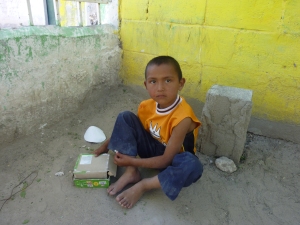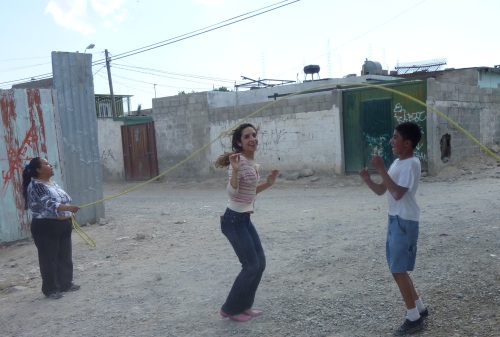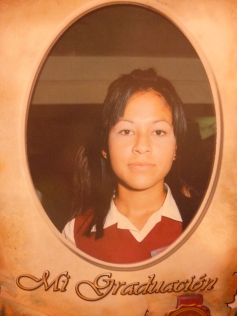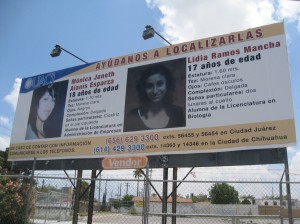May 11, 2010
A few weeks ago I jumped rope for the first time since the fifth grade. I remember how this was absolutely my favorite after lunch activity on the blacktop with a group of girlfriends. Now, as a young woman, I miss those afternoons. The chances of my grown-up girlfriends pulling out a rope and saying, “Let’s jump,” after a midday meal are slim to none. Adults can be so lame.
It was a Wednesday, warm and sunny. I was in jeans and pink flats. The place: colonia Primero de Mayo in south west Juarez. I suppose I shouldn’t have been so surprised at the opportunity to jump rope since I was surrounded by giddy children.
My guide was a social worker with unforgettable green eyes. I picked her up at a corner pharmacy where she was waiting with a portable stereo and a small canvas bag filled with coloring books and crayons. “The neighborhood is a little rough,” she told me. I think I just smiled back at her. Like I haven’t heard that before.
The story behind this particular trip was about a recently published book filled with the testimonies of children growing up in Juarez. Lourdes, the social worker, was part of a coalition of non-profits that published the book. The children we were about to visit were some of those featured in the book. By the way, I got the idea for the story from a friend’s blog (http://elpasotimes.typepad.com/mexico/).
Colonia Primero de Mayo is no different from many other “colonias” in Ciudad Juarez. A colonia in Juarez usually refers to an outlying neighborhood founded by squatters and characterized by poverty. The residents of Primero de Mayo are mainly factory workers who immigrated to Juarez from other Mexican states like Durango, Torreon, and Veracruz. They came some 20 years ago to work in Juarez’s then booming maquiladora industry. Their nimble fingers assemble the car parts and electronics we Americans use on a daily basis. Thanks to the recession, a good number of them are currently unemployed.
When Lourdes and I arrived there were only a few children in the front yard of the family who hosts these weekly gatherings. The homes here were built by hand by their owners, so the architecture can get pretty, well, creative. This house was actually several small houses on a single plot. The walls were a bright yellow and the front yard– like the roads– was all dirt and pebbles.
Lourdes set up the stereo, a table and a few chairs. Then the children arrived. There was about a dozen of them, some barefoot, some in superhero t-shirts, some in stylish second hand shirts. They played games, danced, and of course jumped rope.
After I’d collected some sound and did a few interviews the kids didn’t have to ask me twice to join them in their jumping. I practically threw my gear into my bag and made for the rope.
A familiar tune emerged from the children’s mouths: “Chile, tomate, cebolla, frijoles de la olla, mole!” The rope suddenly went faster, as did my heartbeat! I gave up before the kid jumping with me even broke a sweat.
There is a sad story behind all this, as is typically the case behind so many of my trips to Juarez. These children live with unthinkable violence everyday. Few public policy makers in Juarez take the time to seriously study the effects of such violence on the city’s future generation. The goal of the recently published book with local children’s testimonies, is meant to call attention to this important matter.
When I was in the fifth grade, I was dreaming about how someday I was going to travel the world and become an obstetrician. The children of Primero de Mayo also have dreams. Whether or not they will be realized depends, in part, on how much those of us born with far greater privileges are willing to invest in their futures.




